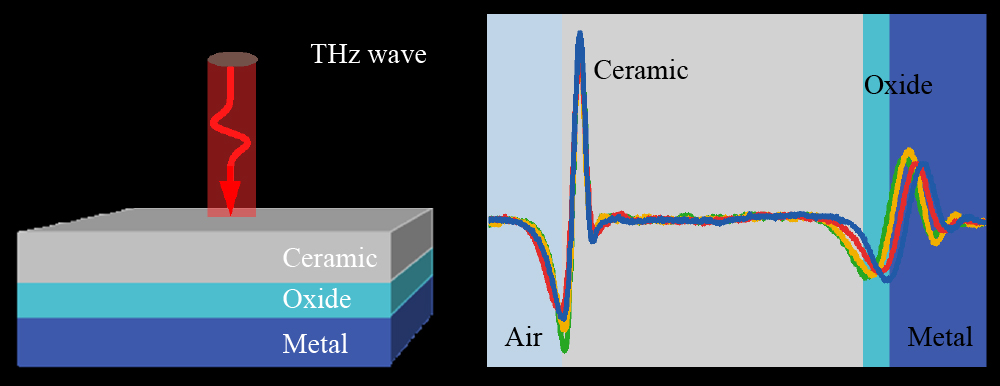Some researchers have discussed the optical parameters of Al
2O
3 in the terahertz band. Fattinger and Grischkowsky [
44] found that the crystalline Al
2O
3 is birefringent and has a refractive index of
= 3.07 for the ordinary ray and
= 3.41 for the extraordinary ray. On this foundation, Rutz et al. [
45] produced the polycrystalline Al
2O
3 which is macroscopically isotropic, and measured the Al
2O
3 value of
= 3.17. Naturally, the refractive index of natural growth TGO which is a mixed oxide including Al
2O
3 and other spinel oxides should be more than 3.17. However, there have a difficulty in TGO refractive index acquisition caused by the TBC after heating cannot be divided easily. An attempt that the sample was immersed in a sulfuric acid solution of 60% solution concentrate for two months is carried out to separate the sample but without any change. The TGO refractive index is temporarily determined as Al
2O
3 value 3.17. Corresponding to the different heating times (20, 40, and 60 h), the TGO calculated results of the traditional threshold method and the proposed method are listed in Tab.3. For the traditional threshold method, the maximum error is 26.63 μm and the averaged error is 21.93 μm, which shows that the environmental noise and system oscillation gravely affect the TOF calculation, and lead to a large error in the thickness measurement. By using the presented method, the accurate TGO thicknesses of TBCs after different heating times, are obtained. The maximum error is 2.79 μm and the averaged error is 1.61 μm. Therefore, the proposed TOF improved TGO thickness measurement method for natural growth TGO thickness calculation is accurate and reliable, making it suitable for the condition monitoring and life prediction of the TBCs. It is noted that the TGO thickness error could be further decreased if the TGO refractive index after heating is used. The proposed method is also appropriate for other materials, such as ceramic coatings [
30], paint layers [
24], drug coatings [
46], and composite laminate [
19]. The erosion, corrosion, delamination, and other damages widely exist in these layered materials, leading to structural damage and thickness change [
17]. The presented method based on THz-TDS has a strong ability to observe the tiny change in the thickness. Therefore, this method is also suitable for damage detection of other layered materials.

















